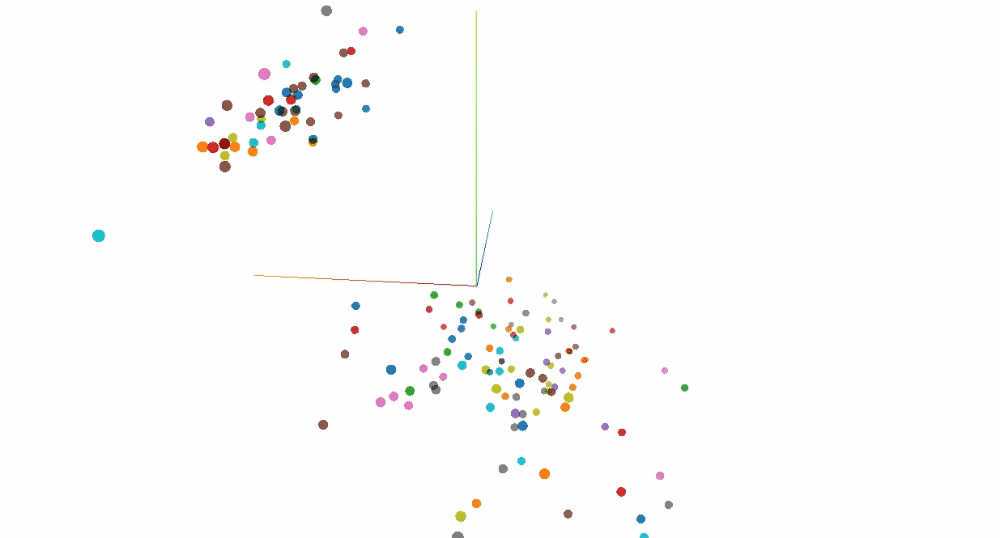UALIFIED PLANS
Qualified Retirement Plans:
Are Tax-Deductible, and can provide the business owner and employees retirement benefits. With the addition of Life Insurance, they can provide death benefits as well. Qualified Plans can give your clients an edge in attracting and retaining highly qualified employees.
Types of Qualified Plans:
There are two general categories of qualified plans:
1. Defined Contribution Plans
A Defined Contribution Plan is a tax-qualified retirement plan in which the employer makes annual contributions on its employees’ behalf.
There are many Defined Contribution plan types, but the most common are:
Pension Plans
Require a fixed annual employer contribution – appropriate for stable, established businesses
Profit Sharing Plans and 401(k)s
Appropriate for employers looking for some flexibility in contributions
Individual Retirement Accounts (IRA)
Lower-cost individual retirement account based plans which generally are not subject to complex ERISA rules. Many of the following details do not apply to IRA accounts. For details on IRA accounts view the IRA page found on the Qualified Plans landing page. View Qualified Plans Overview page for detailed information on these plan types.
Advantages – Defined Contribution Plans
Individual Retirement Arrangement: SEP and SIMPLE IRA
An Individual Retirement Arrangement (IRA) is another form of a Defined Contribution plan. A Defined Contribution plan is a tax-qualified retirement plan in which an employer makes annual contributions on its employees’ behalf.
There are many Defined Contribution plan options, but they generally fall into three distinct categories – IRAs being one of them.
Individual Retirement Arrangement
IRA plans offer another way for small employers to provide a tax-deferred retirement program to its employees. Because these plans are funded with individual retirement plan accounts, they are not subject to the ERISA rules imposed on other defined contribution plans. They are, however, subject to other specific requirements and restrictions based on the plan structure.
Savings Incentive Match Plan for Employees (SIMPLE)
Under this plan, employees can make salary reduction (pre-tax) contributions to their plan account. The employer is required to make either matching or non-elective contributions to each employee’s account.
Matching Contributions – If the employee is making “salary reduction” contributions, the employer matches either the employee contribution, or a percentage of their annual salary.
Non-Elective Contributions – instead of matching contributions, the employer can make a flat, non-elective contribution based on an equal percentage of each eligible employees salary. The percentage of their salary is the same for each employee whether or not they are making salary reduction contributions to the plan.
Eligibility
All employers may establish a SIMPLE-IRA plan, provided they have no more than 100 employees who are employed at any time during the calendar year, regardless of whether they are eligible to participate in the SIMPLEIRA.
Contributions are tax-deductible to the employer, as long as contributions do not exceed current limits.
Contributions grow tax-deferred. Performance in each participant’s individual account increases or decreases the person’s retirement benefit. Additionally, forfeitures may be used to further increase the
participants’ benefits.
Contributions are not taxable to employees, except for the economic benefit of life insurance in the insured plan.
Plans can be established to favor certain participants. The plan can be set up to favor younger participants, while different allocation formulas may be used in order to favor older participants.
Plan administration is generally less complicated and expensive than for Defined Benefit plans.
Insured plans can use a percentage of contributions to buy incidental life insurance protection for plan participants.
2. Defined Benefit Plans
A defined benefit Plan is a tax-qualified plan that may be an appropriate method for established businesses to provide employees with a specified level of benefits while maximizing taxdeductions. If you have business owner clients operating a small, stable business who are looking to put
away substantial contributions and may have a shorter amount of time to do it, a defined benefit plan could be one solution.
How It Works
A defined benefit plan is the only type of pension plan that provides eligible employees with a guaranteed monthly benefit at retirement. The employer’s contributions to the plan must be sufficient to pay future benefits. In addition to retirement benefits, a survivor death benefit is required and may provide larger insured death benefits, plus early retirement and disability benefits. Employers may contribute and generally deduct the amount needed to fund the guaranteed monthly benefit amount at normal retirement age. Employer contributions accumulate tax-deferred and are not taxable income to the employees.
Advantages – Defined Benefit Plans
A defined benefit plan permits the largest annual deductions, larger than any type of defined contribution plan.
Benefits are guaranteed, which makes it easier for participating employees to plan for retirement. It also can be good for morale and for reducing employee turnover.
Incidental life insurance can be included in a defined benefit plan. Life insurance increases the employer’s deduction.
As long as contributions are actuarially reasonable, the employers cost of funding the plan is tax-deductible.
The plan can be set up to favor older participants since the annual cost to fund their benefits is higher.
Disadvantages – Defined Benefit Plans
They can become costly as participants approach retirement age. This can be seen as an advantage for employers whose objective is to create a substantial tax deferral.










